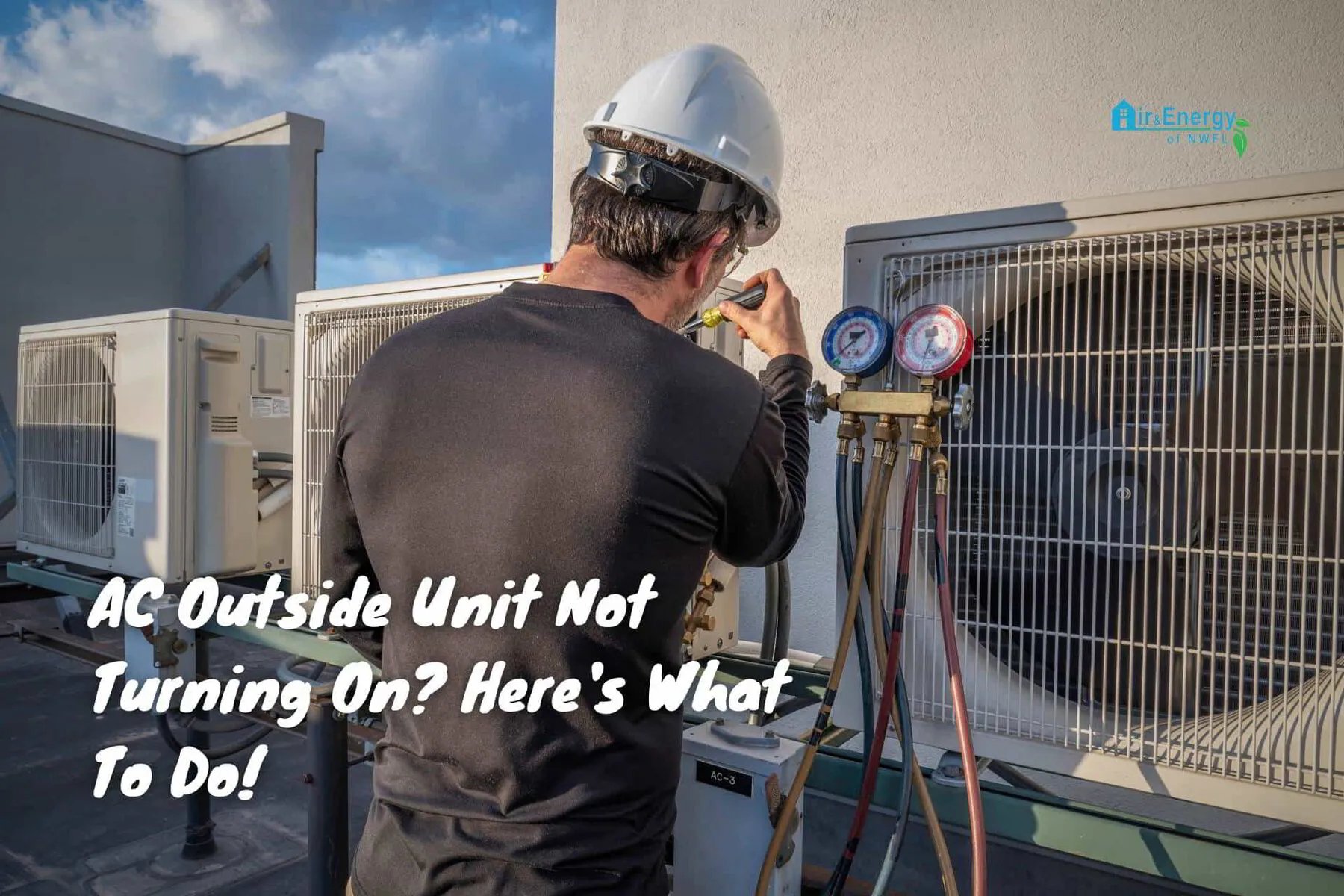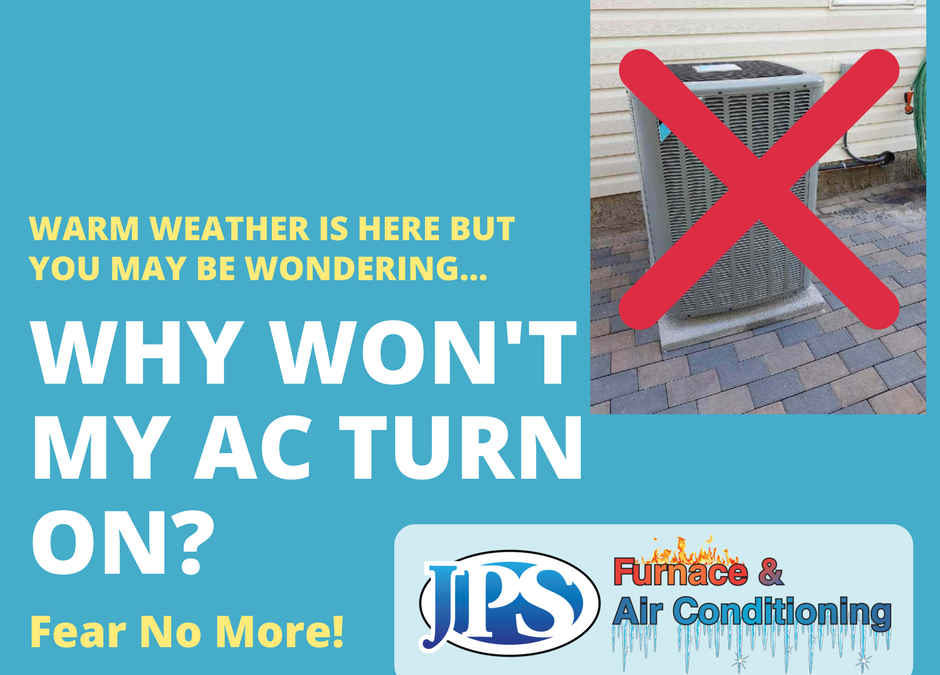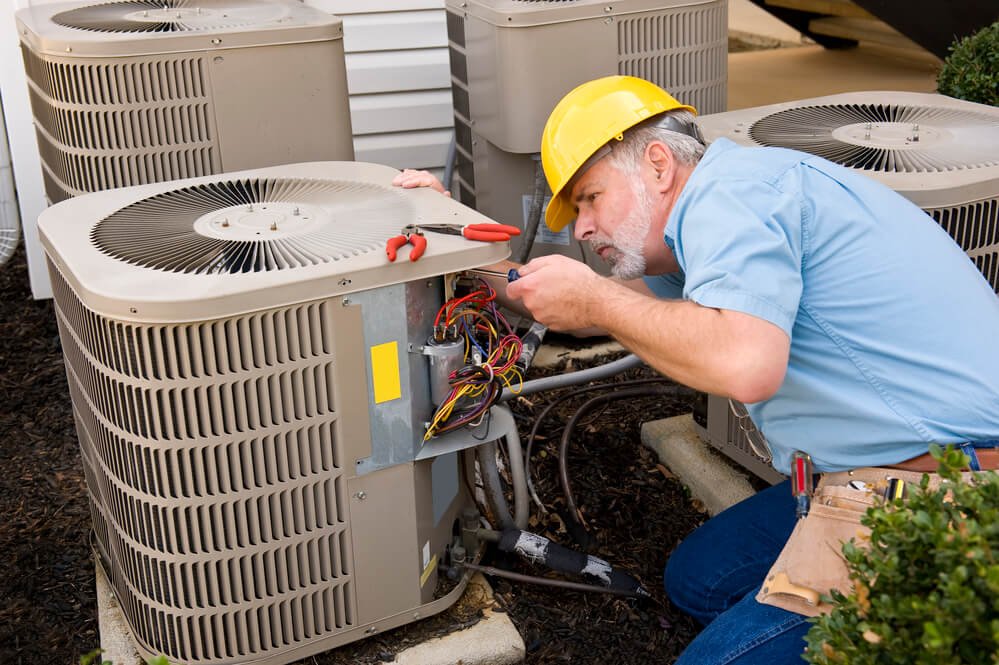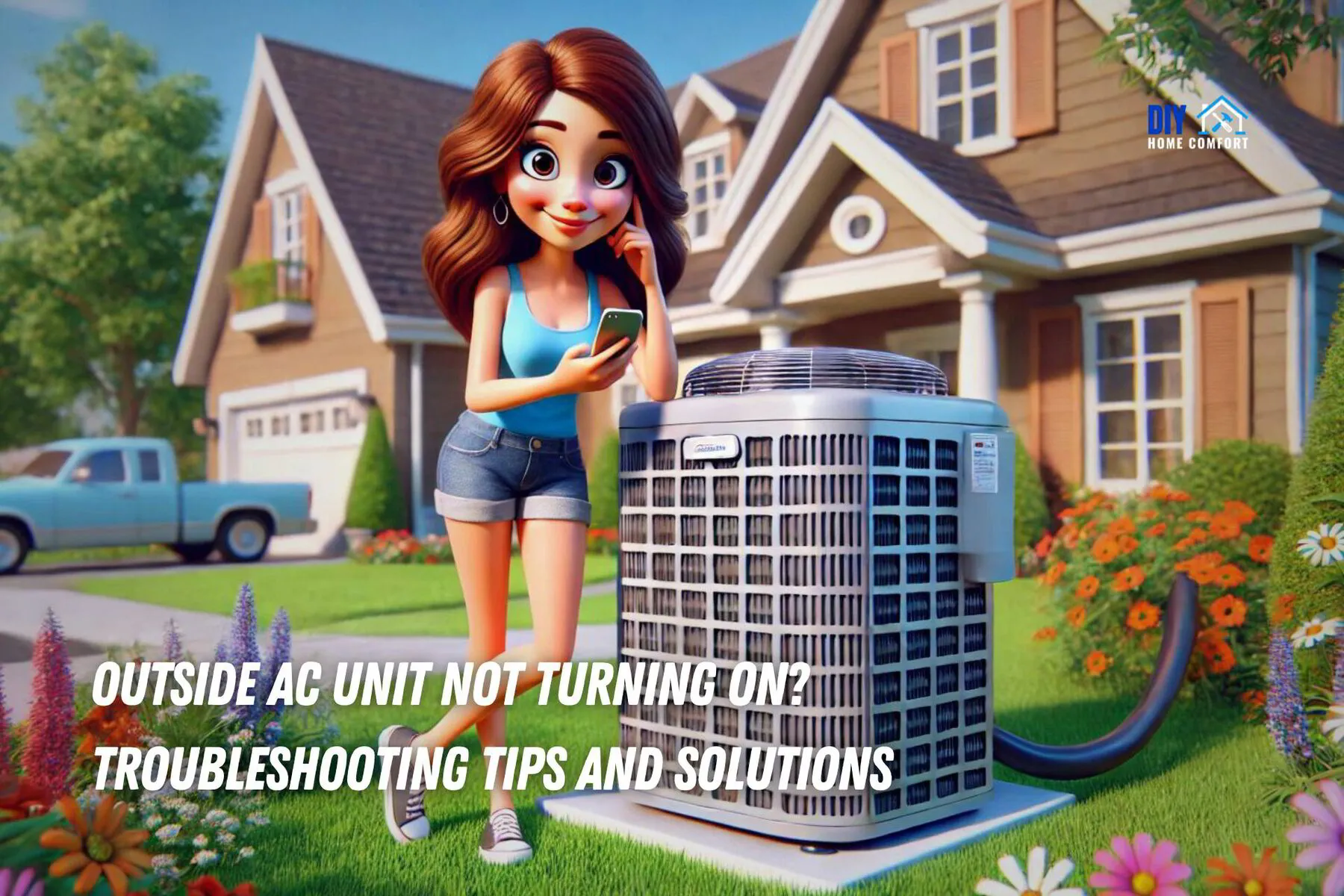Why Is My Ac Outside Unit Not Turning On

Discovering your air conditioner's outside unit isn't turning on can be frustrating, especially during hot weather. This comprehensive guide will walk you through the most common reasons for this problem and help you troubleshoot before calling a professional. We'll explain complex concepts in an easy-to-understand way, using analogies where possible, to empower you to make informed decisions about your AC repair.
Understanding Your AC System
Before diving into troubleshooting, it's helpful to understand the basic workings of your air conditioning system. An AC unit is essentially a heat pump that transfers heat from inside your home to the outside. The system consists of two main parts: the indoor unit (evaporator coil and air handler) and the outdoor unit (condenser coil and compressor).
The outdoor unit, which we're focusing on here, houses the compressor (the heart of the system, pumping refrigerant), the condenser coil (where heat is released), and a fan to help dissipate that heat.
Common Reasons Why Your Outside AC Unit Isn't Turning On
Several issues can prevent your outdoor AC unit from starting. We'll break down the most likely culprits, starting with the simplest and progressing to more complex problems.
1. Power Issues: The First Things to Check
The most basic, yet often overlooked, problems relate to power supply. It’s always a good idea to begin here.
- Tripped Circuit Breaker: This is the most common cause. Locate your electrical panel and check the circuit breaker dedicated to your AC unit (it will usually be a double breaker). If it's tripped (in the "off" or middle position), flip it fully to the "off" position and then back to "on."
- Disconnected Disconnect Switch: Near your outdoor unit, you should find a disconnect switch (it can be a pull-out type or a switch in a box). Ensure this switch is in the "on" position. If it’s a pull-out type, make sure it’s fully inserted.
- Blown Fuse: Some disconnect switches contain fuses. Examine these fuses to see if they are blown. If so, replace them with fuses of the same amperage. Always disconnect power before inspecting or replacing fuses.
2. Thermostat Problems
Your thermostat is the control center of your AC system. If it's not working correctly, it won't signal the outdoor unit to turn on.
- Incorrect Thermostat Settings: Make sure your thermostat is set to "cool" mode and the temperature is set lower than the current room temperature.
- Dead Batteries: If your thermostat is battery-powered, replace the batteries. Low batteries can cause erratic behavior.
- Faulty Thermostat: If you've checked the settings and replaced the batteries, the thermostat itself might be faulty. You can try resetting it (consult your thermostat's manual for instructions). If that doesn’t work, you may need to replace the thermostat.
3. Capacitor Issues: The Starting Power
The capacitor is a small, cylindrical component inside the outdoor unit that provides the electrical "kick" needed to start the compressor and fan motor. Think of it like the starter in your car. If the capacitor is weak or failed, the motor won't start.
- Visual Inspection: Carefully (after disconnecting power!) inspect the capacitor. Look for signs of bulging, leaking, or physical damage. A damaged capacitor needs to be replaced by a qualified technician.
- Testing: Capacitors can be tested with a multimeter, but this is best left to a professional due to the risk of electric shock. A weak capacitor can sometimes cause the motor to hum but not start.
4. Compressor Problems: The Heart of the System
The compressor is the most critical component of your AC system. It circulates the refrigerant, which is like the "blood" of your system, carrying heat from inside to outside. If the compressor fails, your AC won't cool.
- Overheating: Compressors can overheat due to various reasons, such as low refrigerant, dirty coils, or a faulty start relay. Many compressors have a built-in overload protector that will shut them down if they overheat. This protector may reset itself after a cooling period.
- Hard Starting: A compressor that struggles to start may indicate a problem with the start winding, the start relay, or low voltage.
- Complete Failure: Unfortunately, compressors can fail completely. This often results in a loud buzzing or clicking sound, or no sound at all. Compressor replacement is a major repair that can be costly.
5. Fan Motor Issues: Cooling is Key
The fan in the outdoor unit is responsible for dissipating heat from the condenser coil. If the fan motor fails, the unit can overheat and shut down.
- Obstructions: Check for any obstructions blocking the fan blades, such as debris, leaves, or even ice.
- Motor Burnout: Fan motors can burn out due to age, overheating, or electrical problems. A burnt-out motor will need to be replaced.
- Capacitor Issues: Similar to the compressor, the fan motor also uses a capacitor to start. A weak or failed fan motor capacitor can prevent the fan from spinning.
6. Refrigerant Leaks: Losing Cooling Power
Refrigerant is the substance that absorbs and releases heat, allowing your AC to cool your home. If there's a refrigerant leak, your system won't cool effectively, and the compressor may eventually fail.
- Signs of a Leak: Common signs of a refrigerant leak include poor cooling performance, ice buildup on the coils, and a hissing sound near the unit.
- Professional Diagnosis: Refrigerant leaks should be diagnosed and repaired by a licensed HVAC technician. It's illegal and environmentally harmful to intentionally release refrigerant into the atmosphere.
7. Dirty Coils: Restricting Airflow
The condenser coil (in the outdoor unit) and the evaporator coil (in the indoor unit) need to be clean to efficiently transfer heat. Dirty coils restrict airflow and reduce cooling capacity.
- Condenser Coil Cleaning: Turn off the power to the unit. Use a garden hose (with a gentle spray nozzle) to wash away dirt, leaves, and debris from the outside of the condenser coil. Avoid using high pressure, as it can damage the fins.
- Evaporator Coil Cleaning: Cleaning the evaporator coil is more complex and often requires professional assistance.
8. Contactor Problems
The contactor is an electrical switch that controls the flow of power to the compressor and fan motor. If the contactor is faulty, it may not allow power to reach these components.
- Burned or Pitted Contacts: Contactors can wear out over time, especially in systems that cycle on and off frequently. Look for signs of burned or pitted contacts.
- Testing: Testing a contactor requires a multimeter and some electrical knowledge. This is best left to a qualified technician.
9. Frozen Evaporator Coil
A frozen evaporator coil (inside the indoor unit) can restrict airflow and eventually cause the outdoor unit to shut down.
- Causes: Common causes of a frozen evaporator coil include low refrigerant, restricted airflow (due to a dirty air filter), and a faulty blower motor.
- Troubleshooting: Turn off the AC system and allow the ice to melt completely. Check the air filter and replace it if it's dirty. If the problem persists, call a professional to diagnose the underlying cause.
When to Call a Professional
While some of these issues, like checking the circuit breaker or cleaning the coils, can be addressed yourself, others require the expertise of a qualified HVAC technician. It is crucial to call a professional if:
- You are uncomfortable working with electricity.
- You suspect a refrigerant leak.
- You suspect a compressor problem.
- You are unsure about how to diagnose or repair the problem.
Attempting to repair complex AC issues without the proper knowledge and tools can be dangerous and may void your warranty.
Safety Precautions
Always prioritize safety when troubleshooting your AC unit:
- Turn off the power to the unit at the circuit breaker and disconnect switch before attempting any repairs or inspections.
- Avoid touching any electrical components with wet hands.
- Be careful when working around sharp objects, such as the coil fins.
- If in doubt, call a professional.
Preventative Maintenance
Regular maintenance can help prevent many of these problems from occurring in the first place. Consider these preventative measures:
- Change your air filter regularly (every 1-3 months).
- Clean the condenser coil annually.
- Schedule a professional tune-up each year. A tune-up typically includes checking refrigerant levels, inspecting electrical components, and lubricating moving parts.
By understanding the common causes of a non-functional outdoor AC unit and taking preventative measures, you can keep your system running smoothly and efficiently for years to come.










